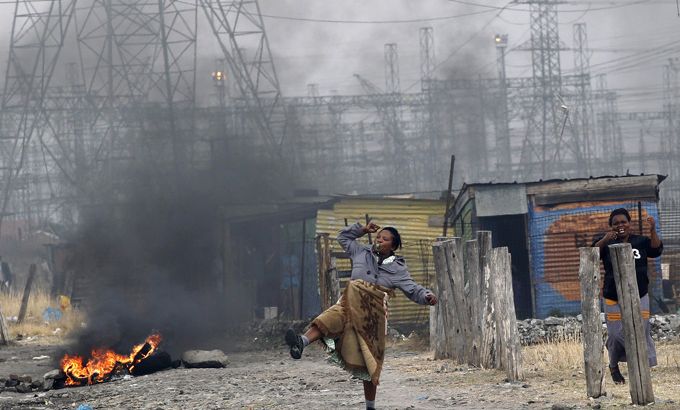South Africa begins inquiry into mine deaths
Judicial commission given four months to probe the deaths of at least 34 miners who were killed by police in Marikana.

A judicial panel in South Africa has begun investigating the rocky site where police killed 34 striking miners in August.
Retired judge Ian Farlam on Monday opened the judicial inquiry into the country’s bloodiest security incident since the end of apartheid.
Farlam, together with crime experts, toured the spot of the shooting at Lonmin’s Marikana platinum mine near Rustenburg, 120 km northwest of Johannesburg.
Farlam has four months to uncover the events surrounding the August 16 “Marikana massacre”, which sparked intense criticism not only of the police but also of mining bosses, unions, the ruling African National Congress (ANC) and President Jacob Zuma.
“Our country weeps because of the tragic loss, and this commission will work expeditiously to ensure the truth is revealed,” Farlam told a hearing in Rustenburg.
The names of the 34 dead, most of them from the poor Eastern Cape province, were read out at the start of the inquiry before lawyers for the police, victims’ families and 270 miners arrested after the shootings locked horns over procedure.
The commission and its findings could be politically damaging to Zuma and the ANC.
However, the inquiry’s four-month timetable means its final findings will come after an internal ANC leadership election in mid-December.
Zuma ordered the investigation to determine the causes of the police killings.
The Marikana commission will determine the roles played by the police, Lonmin, the National Union of Mineworkers and the Association of Mineworkers and Construction Union.
It will also determine whether any of those investigated could have put measures into place to prevent the violence.
Broader remit
Crime experts showed the commission of inquiry the scene of the shootings on Monday.
One of the experts first pointed out where police laid barbed wire fencing that blocked thousands of people gathered on large brown boulders from running back to their informal settlement on August 16.
| IN DEPTH |
|
Al Jazeera’s in-depth coverage of the mining protests in Marikana and elsewhere in South Africa:
|
Sixteen people died near the site. Another 18 were killed across the field and on the other side of the large group of boulders.
The second expert pointed to bullet marks, where shotgun casings were found, bodies laid and an emergency medical care area was set up.
The judicial panel and a large crowd of representatives for those involved in the inquiry followed the experts, after a group of protesters with the Marikana support campaign greeted them with songs and signs that read: “Don’t let the police get away with murder.”
In addition to those killed, some 78 were injured and 270 arrested in the incident.
During the tour, a crime expert pointed out where bodies and shotgun cartridges were found.
At least 10 more people were killed in other violence, including two policemen. The commission puts the death toll in Marikana at 44, and an Associated Press count puts it at 46.
As well as probing the August 16 shootings, the Marikana commission has a broader remit to look into labour relations,
pay and accommodation in South Africa’s mines – issues seen as behind the wildcat strike that preceded the killings.
‘Burning questions’
Al Jazeera’s Tania Page, reporting from Rustenburg, said that people were pleased the commission was set up, “especially so soon after the course of events. They have burning questions over how these events happened.”
Our correspondent went on to say that many are approaching the commission with an open mind, and the judge himself is taking an active approach to the inquiry.
“The judge wants to go to Marikana, and visit the hostels and the areas where people live,” she said. “This is part of the reason why the unrest spread, because of the poor living conditions.”
Miners demanding a large pay increase began striking on August 10. In the following weeks of violence, dozens of people were killed.
Graphic footage of the events on August 16, which the commission is focusing on, shocked the world, raising parallels to brutality under the white apartheid regime. The police action has been described as the worst crackdown since the country transitioned to democracy in 1994.
Under the current mandate, the commission has four months to complete its work and a further month to present its final report. It will also send interim reports to President Zuma once a month. The first report is due by October 12.
